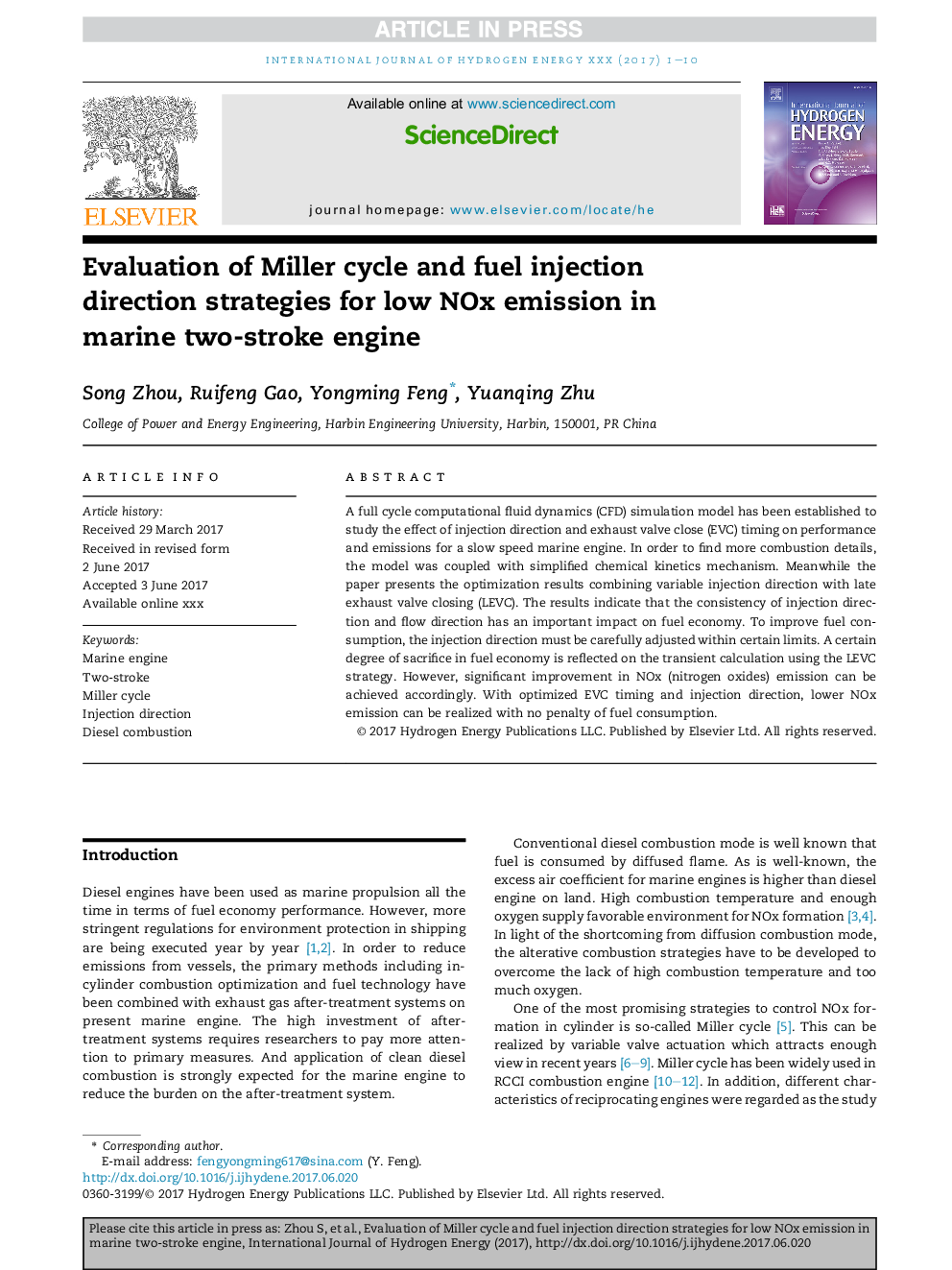| Article ID | Journal | Published Year | Pages | File Type |
|---|---|---|---|---|
| 5146671 | International Journal of Hydrogen Energy | 2017 | 10 Pages |
Abstract
A full cycle computational fluid dynamics (CFD) simulation model has been established to study the effect of injection direction and exhaust valve close (EVC) timing on performance and emissions for a slow speed marine engine. In order to find more combustion details, the model was coupled with simplified chemical kinetics mechanism. Meanwhile the paper presents the optimization results combining variable injection direction with late exhaust valve closing (LEVC). The results indicate that the consistency of injection direction and flow direction has an important impact on fuel economy. To improve fuel consumption, the injection direction must be carefully adjusted within certain limits. A certain degree of sacrifice in fuel economy is reflected on the transient calculation using the LEVC strategy. However, significant improvement in NOx (nitrogen oxides) emission can be achieved accordingly. With optimized EVC timing and injection direction, lower NOx emission can be realized with no penalty of fuel consumption.
Related Topics
Physical Sciences and Engineering
Chemistry
Electrochemistry
Authors
Song Zhou, Ruifeng Gao, Yongming Feng, Yuanqing Zhu,
